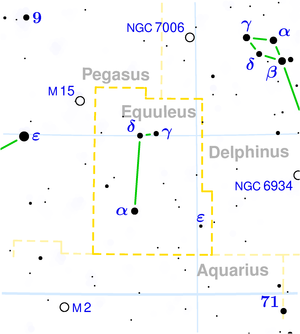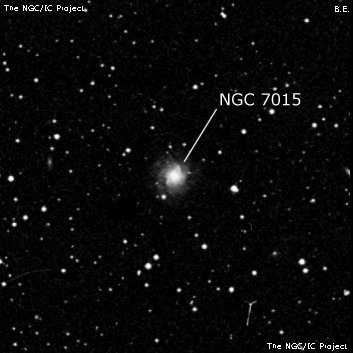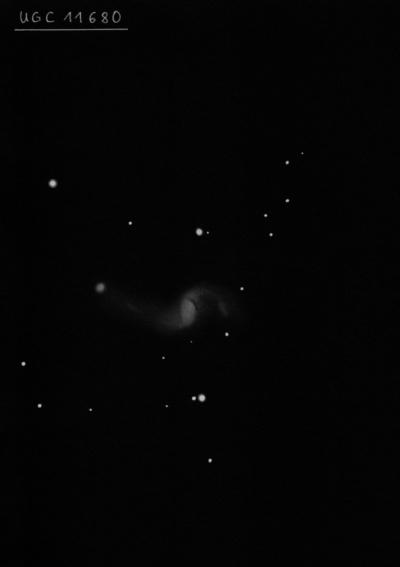The smallest constellation in the northern sky and the second smallest constellation in the sky after the Southern Cross, but much harder to identify. The group of 4mag and 5mag stars that make it up lie between Enif of Pegasus, Delphinus and Aquarius, just above the celestial equator. The constellation is poor in interesting objects as well as the stars themselves. It contains only a few very faint galaxies and a handful of binaries.

Kitalpha (α Equ) - It is the brightest star of the constellation, although it only reaches a magnitude of 3.92. The other stars of the constellation are already below 4th magnitude. Kitalpha is a yellow giant of spectral class G0, from which light has been traveling to us for 186 years.
γ/6 Equ - Only an optical double star, distinguishable with the naked eye under favorable conditions. The stars (4.6 magnitude, 6 magnitude) are separated by nearly 6 arc minutes. However, Gamma EQU also has a physical companion of 11th magnitude, which is separated by 2". A telescope with a minimum aperture of 150 mm is required to observe it. They are located 118 light years away.
ε Equ - A binary star with a magnitude of 6mag at a separation of 0.8" and a true orbit of approximately 101.4 years. At low magnification, they merge into one bright yellow star, which nicely contrasts with a blue star of magnitude 7mag in the same field of view (10.7"). Even at 200x magnification in a 200mm telescope, the two main components appear as an elongated line. The brighter of these two components is actually a physical binary star with an orbital period of 100 years, but its components are too close together to be separated by a small telescope.
Struve 2793 - An easily distinguishable double star, even for small telescopes. The primary component is yellow (7.8 mag) and the companion is blue (8.5 mag). They are separated by 26.6". The primary star has another companion at a distance of only 0.4", but it cannot be resolved using high magnification.
NGC 7015

Édouard Stephan discovered NGC 7015 = St IX-26 = Sw. II-87 on 29 Sep 1878. His micrometric position is very accurate. Lewis Swift independently rediscovered this galaxy on 11 Sep 1885 and logged "pF, pS, R, lbM." His position is 3.5' too far north.
200/250mm - 8" (7/24/82): very faint, small, slightly elongated N-S.
300/350mm - 13.1" (6/29/84): faint, fairly small, slightly elongated N-S, diffuse, weak concentration. A mag 15 star is at the south edge 40" from the center.
Notes by Steve Gottlieb
UGC 11680

300/350mm - 13.1" (6/29/84): extremely faint, very small, round. Situated between two mag 14 stars about 1' N and 1' S and two mag 9.5 stars 5.3' NE and 6.4' SW.
600/800mm - 24" (7/21/12): at 325x appeared moderately bright, fairly small, slightly elongated N-S or NNW-SSE, 25"x20". This is the core of the galaxy and the nucleus is a brighter 10" inner region. The two very low surface brightness spiral arms stretching out southwest and northeast were not noticed. Forms a close pair with II Zw 102 = Mrk 897 1.2' NE (at the tip of the northeast spiral arm). The companion appeared as a high surface brightness 10" "knot" with a fairly bright stellar nucleus and a small faint halo.
Notes by Steve Gottlieb